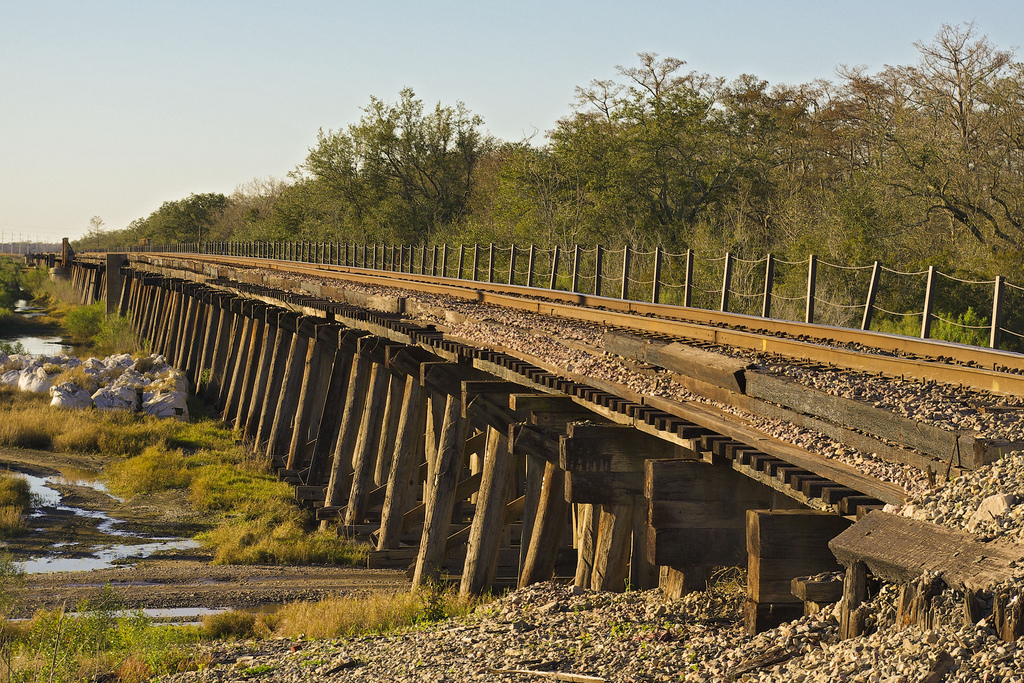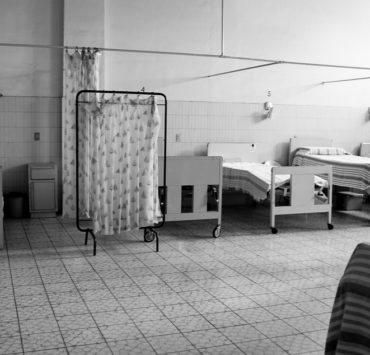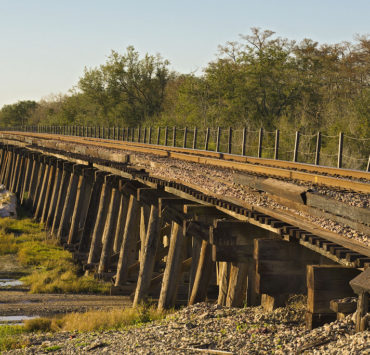
During the month or so that my father spent in an Intensive Care Unit in a hospital in suburban Detroit, my travel habits changed in peculiar ways. Not knowing ahead of time the duration of my stay in Detroit nor how long I would be back home in New York before being called again to the Midwest, I was hardly able to pack anything at all. Yet I could not help but take luggage with me, so more than once I travelled with an empty suitcase, which brought to mind the image of an out-of-work businessman who still carries his briefcase everywhere. What I did pack were vegetables. I found myself regularly transporting produce from one state to the other. If I had lettuce in my fridge in New York I would carry it with me on the flight to Detroit imagining the salad I would make at my parents’ house. One time, I took two carrots from my mother’s fridge and put them in my vacant suitcase so that I could use them in a lentil soup I planned to make when I returned to New York. Suddenly, using an airline carrier to transport the ingredients I had gathered for the day’s lunch or dinner not only made sense, but also seemed vital to my well-being. I think it allowed me to feel a kind of continuity between morning in the ICU with my father in Michigan and early evening alone in my apartment in New York at a time when I felt quite dislocated from the routines of my life. During this same period of time there was another odd development, which I understood far less: I became a person who felt compelled to take a fifteen hour train journey instead of a routine one and a half hour flight.
I bought my ticket for the Lake Shore Limited departing from New York on September 21st. The #49 train departs daily from New York Penn Station at 3:40pm and reaches its final destination, Chicago’s Union Station at 9:59 the following morning. Another section of the Lake Shore Limited departs from Boston. In Albany, the New York and Boston trains are hitched together for the journey to the Midwest. I would be getting off in Toledo, OH around 5:55am and would continue by car for another hour to Detroit.
I had enough experience on Amtrak’s well-trafficked Northeast Corridor routes to not be romantic about American train travel. But I also knew that the railroads had been fundamental to the (often mythologized) American past. 19th century railroads, including those regional lines that were consolidated into the powerful New York Central Railroad, facilitated the economic development and westward expansion of the country. Given the proliferation of railroad companies in the 19th century, many ventures bankrupted investors and owners. On the other hand, the success of the New York Central Railroad made the Vanderbilt fortune.
In the early twentieth century, before the decline of rail ridership, and well before the creation of Amtrak, the route between New York and Chicago was a busy passenger line. Trains such as the Commodore Vanderbilt, the Pacemaker and the Chicagoan travelled daily between the cities. The current Lake Shore Limited most closely follows the route of the former 20th Century Limited, which began operation in 1902 with the promise of the century ahead. It became renowned for its speed, service and glamour. It could make the journey between New York City and Chicago in 16 hours. The staff was known to roll out a red carpet for passengers boarding the train and offer them flowers. The train’s Pullman palace cars carried V.I.P passengers who had maids and barbers as well as secretarial services at their disposal. Cocktails were served, and baths were drawn. During much of its run, the 20th Century Limited was called the greatest train in the world. But by mid-century its ridership was down and the train was in decline. On its last trip in December 1967 the half empty train pulled into Chicago nearly ten hours late.
It occurs to me that a better name for the Lake Shore Limited might be The 20th Century Limited. There’s absolutely nothing luxurious about Amtrak’s current Lake Shore Limited train, of course. But just as the actual 20th Century Limited began by looking forward to possibilities of the century ahead, so the current Lake Shore Limited seems stuck in a backward glance at a defunct system and an ended era; it is decidedly not 21st century in amenities and appearance. For instance, there is no Wi-Fi on this route. But if you ignore the fact that it’s 2013 and forget your other experiences of train travel (on the Deutsche Bahn in Germany, say, or the South Central Railways in India) the experience is squarely adequate.
And though the departure at Penn Station was unceremonious – there was no one to wave goodbye to as there always had been when I boarded a train in India –I still couldn’t help feeling excited about boarding a long haul train. I could not afford a berth in the sleeper car, but the coach car offered ample legroom, a reclining seat with an attached footrest and access to dining services. Moreover, there was the promise of the very best thing Amtrak has to offer over endless miles of track: a window.
The Lake Shore Limited does not travel the most direct path from New York to Chicago; it follows a historic route along waterways instead: up the eastern shore the Hudson River to Albany; from Albany to Buffalo, along the Erie Canal; then after Buffalo, along the entire Southern coast of Lake Erie; finally after crossing northern Ohio and northern Indiana, towards Chicago on Lake Michigan. I periodically ride Amtrak trains to Rhinecliff in the Hudson Valley for work, so for the first two hours of my trip the scenery was familiar. I watched for familiar landmarks: the curve of the Tapan Zee Bridge, the Indian Point Nuclear Power Plant, the mansions perched on bluffs across the river. Though I’ve come to appreciate the view across the Hudson in all conditions, the low-lying white clouds were picture perfect that day. As the train continued further upstream into unfamiliar territory, the river sometimes turned marshy at its edges, the hills across the river veered inland and the opposite bank flattened out. This part of the river was more still and in some ways less beautiful to me than the tidal estuary of the lower Hudson around New York City, but I was still mesmerized. In the city I lived just a few blocks from the water. Now, I was transfixed by the very difference of this section of the river, and for a moment I lamented that I could not continue to follow the river all the way to its source, to some place that I had never imagined.
The first phase of the journey ended at the Albany-Rensselaer station, where the train stopped for 45 minutes to allow for the train arriving from Boston to be attached. The engine was cut off, and as the trains were about to be joined the conductor repeatedly warned passengers to be seated and brace for a heavy jolt. I was disappointed to barely feel a shudder when the trains were finally connected. During the break passengers stepped out to smoke or went into the station to buy sundries. I walked out on to the platform to stretch and watched the last bit of light drain from the sky on what I realized then was the last day of summer. By the time we crossed the Hudson into Albany proper and headed west it was night.
Although it made vague sense to me that the railroad had been constructed near pre-existing water routes, the actual relationship between the early railroads and the Erie Canal was not as co-operative as I had imagined. One of the first passenger rail services in the U.S. was on a track constructed between Albany and Schenectady in order to ease passenger travel over a particularly slow part of the canal. The inaugural trip was made one hundred and eighty two years before my own journey, almost to the day, on September 24, 1831. It was a momentous occasion and a small crowd, including a painter who recorded the scene, was present. It took a little over an hour for the steam-powered train to cross through 16 miles of pine forest into Schenectady. The very success of the Albany – Schenectady line prompted the construction of tracks all the way to Buffalo. Soon the competition from the railroads threatened the economic prospects of the canal. I never actually got to see the canal, because we travelled beside it in the dark. The journey between Albany and Schenectady on the Lake Shore Limited took about 25 minutes and was utterly uneventful. The lights in the car were dimmed soon after, and I noticed little more than some big box stores and what I thought was a prison tower as we travelled the rest of the way across New York State.
At some point during those quiet hours, my sister called from the hospital to tell me that my father was no longer under sedation. I understood this to mean that he was conscious for the first time in weeks. She told me that he couldn’t speak—he had undergone a tracheostomy the day before—but she would hold the phone to his ear if I wanted to say something to him. I spoke a short monologue and said goodbye, realizing that in the morning I would see my father and it was possible that he would be awake and see me, too.
Around midnight the train arrived in Buffalo, where I fell under a second brief spell of melancholy at not being able to continue on in the same direction. Here the train would turn and head Southwest along Lake Erie to Toledo, Ohio, where I would disembark. From Toledo there was a bus that made the hour-long trip into Detroit, though I would be picked up and driven home by a family friend. I knew, however, that the shortest way home was to continue west through Buffalo and Ontario, Canada to Detroit. When I arrived in the U.S. from India as a child I first lived with my mother in Detroit while my father lived in Buffalo. We travelled back and forth by road and I knew the journey well, including its hazards. There were few rest stops along the way. And once my father called to say his car had rolled into a ditch during a snowstorm and that he was stranded in rural Canada.
There has been no train service between New York and Detroit for many years. At one time, however, you could take the Detroiter or the Wolverine, which passed through Buffalo and Ontario into Michigan Central Station in Detroit. The terminal was built in 1913, the year that Grand Central Station opened in New York and was designed by the same team of architects. It was a massive building, always out of proportion with its surroundings as nearby development never followed its construction. After the station was closed in 1988 trains stopped at a platform near the building for a while. Today the station remains most famous for its afterlife as an iconic Detroit ruin.
We had reached the outskirts of Toledo when the train was delayed for a half an hour. We were stuck on the tracks a few miles from the station waiting for a freight train to pass. By now, most of the trains in the U.S. carry freight rather than passengers. In fact, much of the railroad that we crossed on the Lake Shore Limited belongs to private freight lines. Freight trains are given priority on these tracks, which means that passenger trains are routinely delayed. By the time I got off the train in Toledo it was past 6:30 in the morning. I had been on the train for about fifteen hours.
Over the next few weeks, as my father’s condition improved, I made additional train journeys: from Toledo to Pittsburgh aboard the Capitol Limited, and later from Pittsburgh to New York aboard the Pennsylvanian. At the time I didn’t understand it, but instinctively felt that I should travel by train on not by plane. Perhaps part of it was a reaction to the ICU, a place that felt viscerally much like a prison, a non-space where one’s life in the world was voided. Though my father was well cared for, it was difficult to see him in a place where, even once he was fully conscious, he was granted little agency. Perhaps I wanted to avoid entering the very tightly controlled and monitored non-space of an airport, with all its disciplining rituals and regulations.
I think mostly I wanted to be on the ground. Airports and airplanes pull you into a kind of abstraction of time and space, and I didn’t want to feel abstracted from the world. My train ride to Detroit had not been exciting. I would say that it had even been somewhat boring. For a little while I read. Mostly, I spent my time looking out the window for hours on end, even when there was no longer anything to see. Somehow I needed that particular kind of boredom. I needed an excess of time to get where I was going. In travelling over land between New York and Detroit I had moved through the terrain of my American life, and briefly mapped it onto a terrain that pre-dated my arrival in the country. I had been able to look out a window and imagine the landscape and its history even when I couldn’t see it. I had been able to measure the distance I had crossed.
Previosuly published in 3quarksdaily.com

Madhu Kaza was born in Andhra Pradesh, India and grew up in Detroit, Michigan. She is currently an educator, writer and artist based in New York. Much of her work is informed by her astonishment at everyday life.








